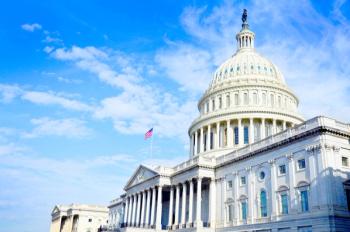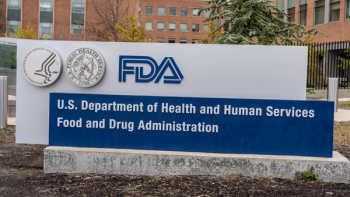
- Pharmaceutical Executive-07-01-2019
- Volume 39
- Issue 7
FDA Maps Pathway to More Accessible Biosimilars
New guidances open the door to interchangeables and less costly insulin.
To further the development and approval of competitive biotech therapies, FDA recently finalized its recommendations for developing interchangeable biosimilars, a much-anticipated and hotly debated option expected to enhance consumer access to innovative medicines. The guidance
version retains many key provisions of the original, but with some changes in emphasis and wording designed to encourage manufacturers to adopt this route to market.
A main provision continues to call for sponsors of interchangeables to conduct switching studies, which FDA says are important to demonstrate clearly to physicians and patients that safety and efficacy are not affected by pharmacy-level switching. While some firms consider extensive switching studies unnecessary, FDA justifies this approach as key to gaining public trust in these products, and says it usually will require switching studies to approve an interchangeable label.
At the same time, the new guidance supports wider use of non-US-licensed comparator products to conduct tests and produce the data needed to demonstrate interchangeability. Even though FDA wants data from bridging studies to foreign-made reference products, manufacturers still should benefit from leeway to obtain samples from foreign markets where biologics often are less expensive than in the US and thus can help reduce the cost and time for developing interchangeable therapies.
The new guidance also appears less didactic by dropping the frequent use of terms such as “residual uncertainty” and “fingerprint-like” similarity between reference and interchangeable products, which were common in earlier advisories. FDA, here, aims to set general standards and requirements for these therapies, while noting that the specific data and testing needed to document interchangeability may vary with the structural and functional complexity of the specific product and with clinical experience with the reference product. Sponsors may seek to justify an exemption from switching studies, and FDA says it will take a flexible approach.
Demonstrating quality
FDA also looks to advance the development and production of both biosimilars and interchangeable therapies through another guidance on ensuring product quality and similarity. Here, the agency advises on developing comparative analytical assessment plans to demonstrate biosimilarity, with some specifics on procedures for documenting quality in a range of production lots to make biosimilar development and production more predictable and efficient.
The
Access to insulin
In moving forward with standards for interchangeable products and for meeting quality standards, FDA sets the stage for the development and approval of lower-cost insulin products, which are scheduled to transition to biologic status in March 2020. There is great anticipation that interchangeable insulin therapies, which can be dispensed by pharmacists without a specific prescription for the follow-on version, will provide important alternatives to increasingly expensive diabetes treatments as multiple sponsors move into this field.
These issues were discussed at an FDA public meeting in May on the future of biosimilar insulins, just days after the appearance of the interchangeable biologics guidance. As a relatively simple biotech product that has been available as a drug for 100 years (but ineligible for generic drug competition), manufacturers expect to be able to utilize a rather streamlined and straight-forward process for documenting similarity and interchangeability for these well-known therapies. Firms planning to produce competitive insulin therapies propose that FDA require data from only one, small immunogenicity study, as opposed to multiple switching studies, and that analytic characterization, bridging studies, and clear pharmacokinetic and
pharmacodynamic data should provide sufficient support for interchangeable insulins.
FDA says it plans additional guidance on standards for and data needed on product container closure systems and delivery device constituent parts to support the presentation of a proposed interchangeable product. Of interest is how a biosimilar or interchangeable determination may be affected by delivery of insulin through a pump or over-the-counter device.
So far, FDA has not approved any biosimilars as interchangeable, but this is expected to change with continued clarification of the regulatory process and testing requirements. The rising price of insulin therapies has become one of the most contentious issues in the escalating drug pricing debate, with Congressional hearings generating multiple legislative proposals on this issue, many supporting the development of biosimilar and interchangeable products. A strategic decision for biosimilar makers is whether to seek biosimilar approval first, and then pursue interchangeable status. Or to develop an interchangeable product from the beginning. An incentive for that approach is that the sponsor developing the first interchangeable product may be eligible for an added year of market exclusivity.
Jill Wechsler is Pharmaceutical Executive’s Washington Correspondent. She can be reached at
Articles in this issue
over 6 years ago
Creating an ‘Unbossed’ Environment in the Workplaceover 6 years ago
Proposed Rebates Rule Raises Tough Questionsover 6 years ago
Drug Formulary Decisions: Fixing a Broken Systemover 6 years ago
The Feasibility of Patient Insights Before Launchover 6 years ago
Compliance Disruptorsover 6 years ago
Asia’s Complex Compliance Landscapeover 6 years ago
European Pricing Talks: A lot of Smoke—or is it Fire?over 6 years ago
Top Trends, Takeaways from DIAover 6 years ago
Pharma & Biotech: Financial Pulse-Check, Outlookover 6 years ago
Pricing in DTC: Adjusting to the New WorldNewsletter
Lead with insight with the Pharmaceutical Executive newsletter, featuring strategic analysis, leadership trends, and market intelligence for biopharma decision-makers.




